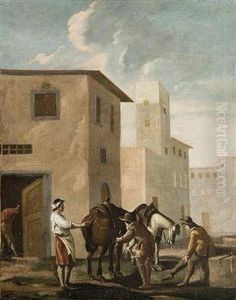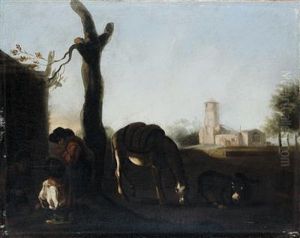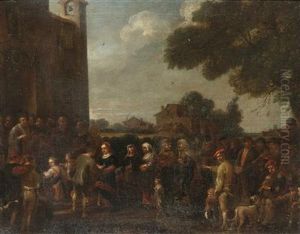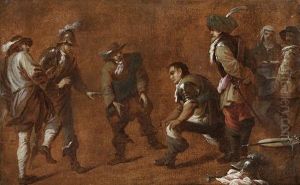Bambocciante Paintings
The term 'Bambocciante' refers not to a single artist, but to a group of Dutch and Flemish painters working in Rome during the 17th century. These artists are known for their genre paintings depicting scenes of everyday life, often with a humorous or satirical twist. The name 'Bambocciante' is derived from the nickname of Pieter van Laer, a central figure in this movement, who was called 'Il Bamboccio' due to his deformed appearance. 'Bamboccio' translates to 'puppet' or 'doll' in Italian, and the term 'Bambocciante' was extended to describe the artists who followed his stylistic approach.
The Bamboccianti were inspired by the Roman Campagna, the countryside surrounding Rome, and its inhabitants. Their works often featured peasants, beggars, and other figures from the lower classes, engaged in everyday activities such as drinking, gaming, and merrymaking. This was a departure from the grand historical, religious, and mythological themes that dominated Italian art at the time. The Bamboccianti works were prized for their detailed realism, narrative quality, and their often candid portrayal of the less-glamorous aspects of life.
Pieter van Laer (1599–1642) is credited with the inception of the Bamboccianti style. Other notable members of this grouping include artists such as Joachim von Sandrart, Jan Miel, and Michelangelo Cerquozzi. These artists influenced not only each other but also Italian genre painters, contributing to a cross-cultural exchange between the Northern and Italian artistic traditions.
The Bamboccianti remained active until the end of the 17th century, and their work had a lasting impact on the genre painting tradition. Despite their popularity in their time, the Bamboccianti were sometimes criticized for the perceived vulgarity of their subject matter. Nevertheless, they provided an important counterpoint to the prevailing Baroque aesthetic of their era and added a rich and diverse chapter to the story of European art.



